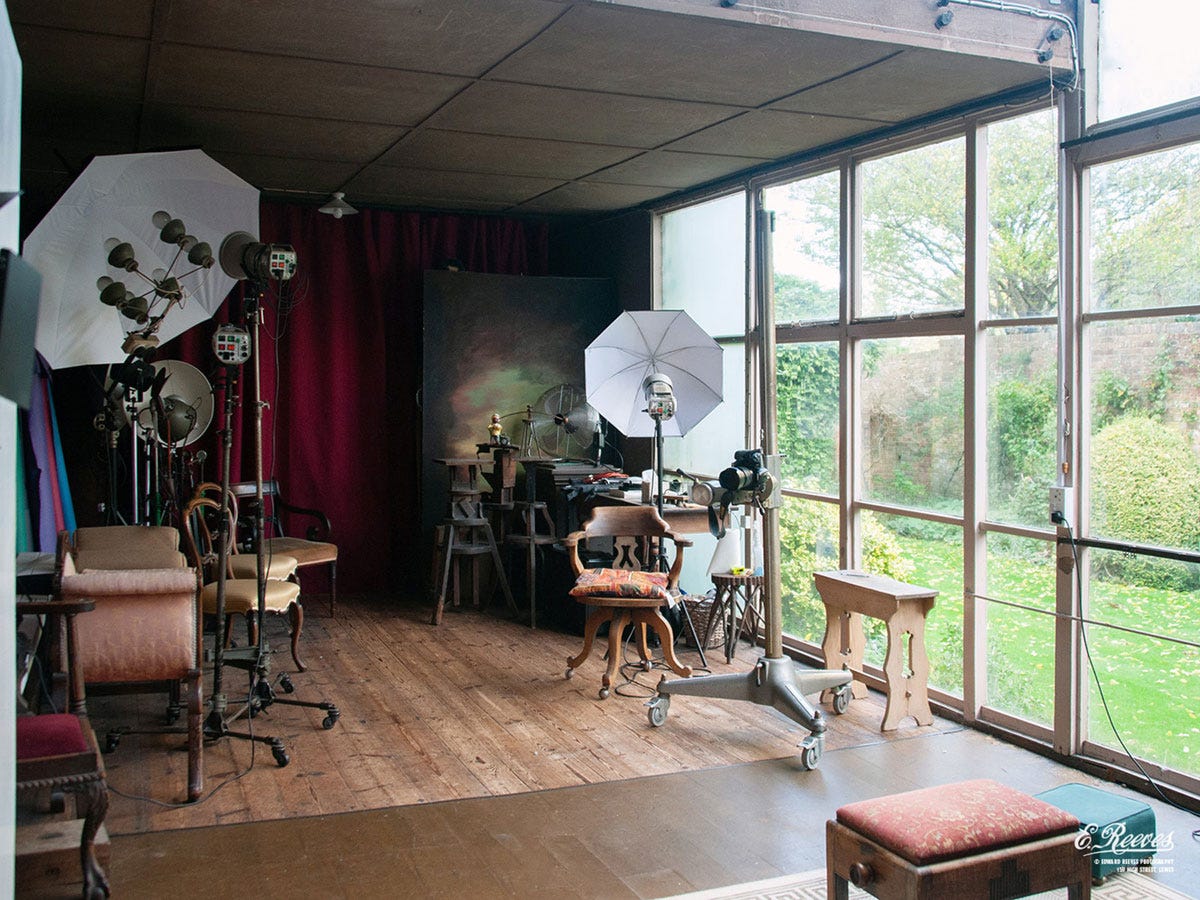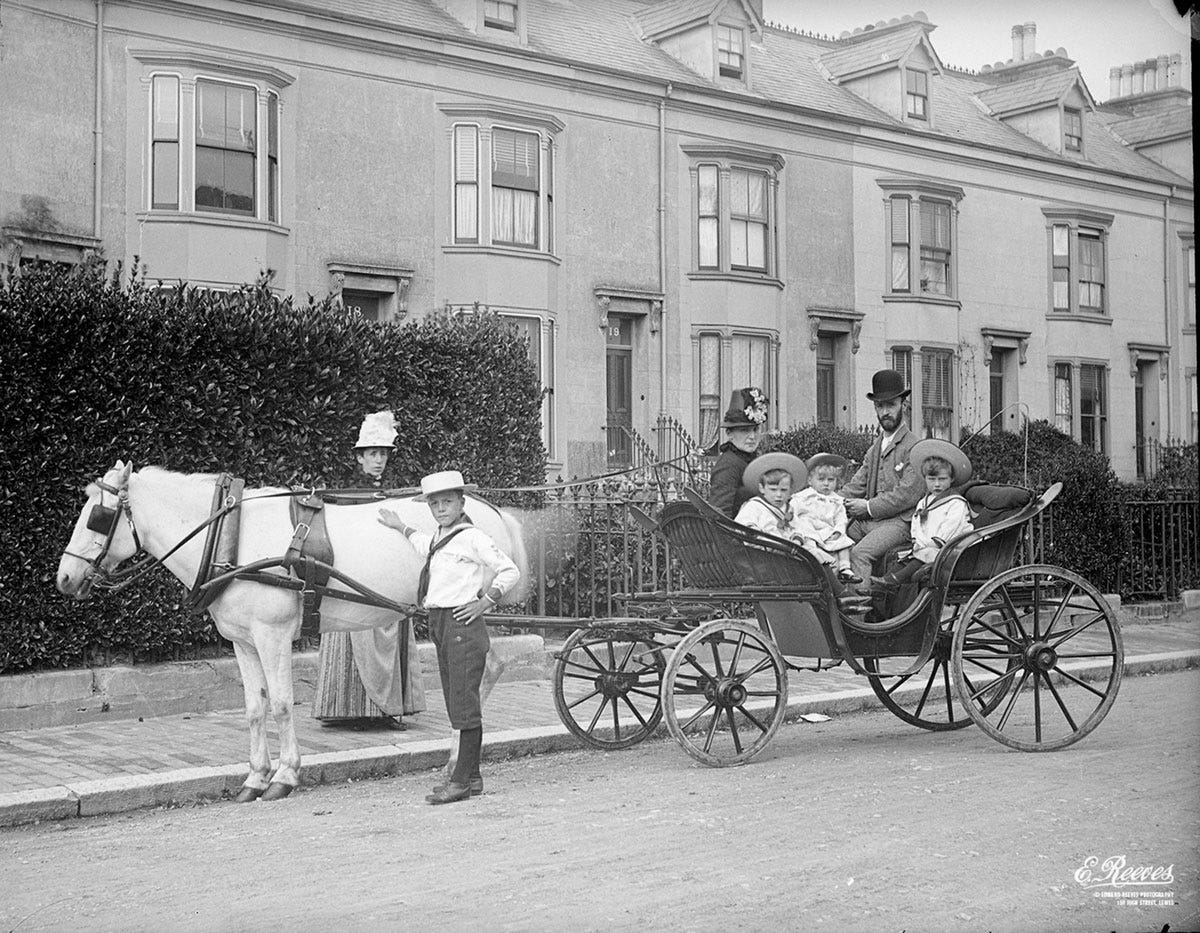The historical treasure trove emerging from a family photography business
Known colloquially as 'Lewes' family album', the collection is significant not just to its hometown, but the field of photographic history at large.
A quarter of a million glass plates, another quarter of a million negatives, plus digital images; 170 years; four generations; one location. They are the vital statistics of Edward Reeves Photography, the oldest still active, still in the same family, studio in the world.
Brigitte Lardinois, Reader in the Understanding of Public Photography at the London College of Communication, University of the Arts London, first came across the business in Lewes, where she lives in the south of England, around 2008. It took her over a year to convince the current owners, Tom Reeves and his wife Tania Osband, to let her explore its collection (“their argument was always ‘we’re a shop, not a museum, we don’t have capacity for that’, which is totally understandable”).
But it was worth the wait, she says.
“There’s something so magical about the Reeves building and the way that it’s been kept. It’s not just the shop where they sell photos and postcards and take bookings for portrait sessions. Behind it there’s a work room with an intact dark room, and down a little alleyway there’s a Victorian daylight studio that’s still used.”
And then there’s the photographic collection: “It’s so pristine because they have never let anyone in. That meant that on the one hand, they didn’t really know what they had, but on the other hand, nobody had ever messed it up.
“My first impression was a sense of wonder, and then very soon I started to feel that it was a real privilege to actually have access and, together with the owners, go on this journey of finding out what they had.”
For the past 12 years, Lardinois has been leading a project in close collaboration with the owners to catalogue and curate the collection, drawing on a team of 40-50 volunteers. Together they are digitising the ledgers, identifying which entries correspond to which glass plates, and cross referencing the data with account books and correspondence. So far, they have created a (not currently public) searchable database of more than 80,000 entries.
On top of the essential records and outputs from running a photographic business, there’s also a huge amount of ephemera, which is historically significant, too. From recipe books of chemicals used to coat the glass plates, to pamphlets issued during the Second World War which stipulated how film (a scarce commodity at the time) could be used, and personal letters, including from William ‘Buffalo Bill’ Cody, who was photographed when his Wild West show came to the UK in the early 1900s.
The project has also revealed family history that had been forgotten. “For the first 10 years of the project, the narrative went that the business was passed from great grandfather, to grandfather, to father, to Tom. But during the pandemic we found a whole box of family correspondence and it turns out that the original Edward Reeves gave the business to his son and daughter. The daughter, Pollie, worked in the studio and was on the company letterhead. But she died early from tuberculosis.
“What does that mean? That the narrative that it was only men was incorrect, and nobody had ever clocked that. And of course, if you’re interested in women’s history – that’s how women get forgotten, because either the material isn’t there to confirm that they had active roles, or the family narrative doesn’t include them. So that was a really great find.”
Plus, the project is also revealing little factoids like: the business has more original studio backdrops than most museums of photography.
Visits from representatives of institutions including the Victoria and Albert Museum and National Media Museum have helped confirm to Lardinois and the owners that the archive is “an absolute treasure trove and unique in the history of British photography”. Professor Elizabeth Edwards, an expert and leader in the field of the history of British commercial photography, has said (“and she allows me to quote her on this”) that the Edward Reeves Photography archive is “one of the most important finds in British photography this century”.
The aim of the archive project is not to digitise all the images, Lardinois says. “That’s just impossible, because it’s constantly expanding, and there’s material in there you wouldn’t want to digitise – we have endless pictures of produce from the local agricultural college. There’s only so many turnips you can scan,” she jokes.
And furthermore, mass digitisation “is not even really necessary”. With the database of ledger entries, searches can reveal whether a person, place, or subject exists in the archive and, if it does, the original images can be retrieved and scanned only if required.
“It’s the paperwork that makes the magic,” Lardinois explains. “Lots of people have kept Victorian glass plates, only to find that you end up with just what you can see: Victorian man with beard. Whereas what we have is a record of name, occupation, address, and via Ancestry and the census, we can then find out who they were married to, and so on.”
But putting a system in place for these kinds of processes – and particularly, making them available to the public – is still some way off. It will require sustained funding and human resource to manage.
In the meantime, select digitised images are being shared with the local community through activities such as annual lightbox exhibitions, hosted in the windows of local shops, and featuring historic images relating to the very buildings in which they’re being displayed.
“One of the things that attracts me to doing these exhibitions is that people from all different walks of life can engage with them. There are people who would never, ever go to a photography gallery, for example, but this is so accessible. You can go with your pram or your mobility scooter or with your kids, you can go after hours.
“It’s one of the most joyous projects I’ve worked on,” Lardinois says. “For someone who doesn’t come from this country [she moved here from the Netherlands in 1985], to be able to research and become so embedded in a very English community has been so interesting and such a privilege.”
And the archive being, as she describes, “genuinely, one of the most important collections in this country, and further afield” is a nice bonus.











